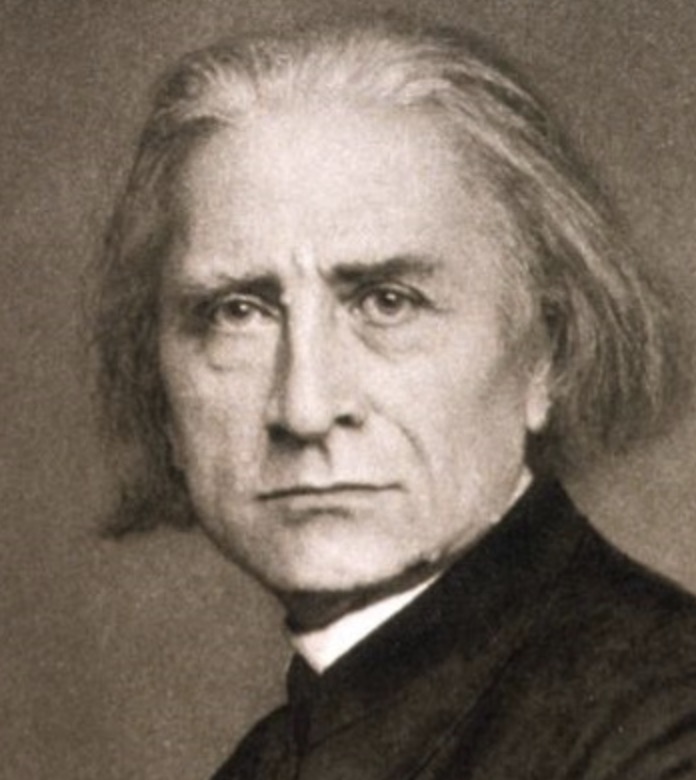
Franz Liszt was born on October 22, 1811, in Raiding, Hungary (now Doborján, Austria). His father Adam, played the piano, violin and cello and through his work for Prince Nikolaus II Esterházy he associated with Haydn, Hummel and Beethoven. From an early age, Franz listened to his father’s piano playing and by age seven, he was learning to play the piano and displaying remarkable musical talent. In 1820, at the age of nine, Franz moved with his family to Vienna, where he received piano lessons from renowned musician, Carl Czerny and later studied composition with Ferdinando Paer and Antonio Salieri.
On December 1822, Liszt had his first public debut in Vienna at a concert at the “Landständischer Saal.” His performance was deemed a great success and young Franz was welcomed into the aristocratic society of Austria-Hungary where he met Beethoven and Schubert. In early 1823, Liszt’s first composition Variation 24 in Part II of Vaterlänischer Künstlerverein was published.
During the 1830’s and 40’s Liszt gained fame as a pianist and became known for his dazzling virtuosic performances. He toured extensively throughout Europe, leaving audiences in awe of his skills and charisma. His compositions are known for their innovation and influence on the development of Romantic music. As reported in the Wiki encyclopedia, “Women fought over his silk handkerchiefs and velvet gloves, which they ripped to shreds as souvenirs. This atmosphere was fuelled in great part by the artist’s mesmeric personality and stage presence. Many witnesses later testified that Liszt’s playing raised the mood of audiences to a level of mystical ecstasy. Franz Liszt became known for his development of the symphonic poem and the transformation of thematic material within a piece.
In the mid-19th century, Liszt settled in Weimar, Germany, serving as the Court Kapellmeister (conductor). During his time in Weimar, he developed his career as a conductor and composer. His close connections with many other prominent composers of his time, such as, Richard Wagner, Hector Berlioz, and Frédéric Chopin enabled him to transcribe many of their compositions for the piano. His income, by that time, had increased so much that he donated large sums to the building fund of Cologne Cathedral and St. Stephen’s Basilica in Pest and made private donations to public services such as hospitals and schools, as well as charitable organizations such as the Leipzig Musicians Pension Fund. After the Great Fire of Hambourg in May 1842, Franz Liszt gave concerts in aid of those left homeless. On March 14, 1842, he received an honorary doctorate from the University of Königsberg—an honor unprecedented at the time. Liszt made so much money during his mid-forties that nearly all his performing fees after 1857 had gone to charity.
In February 1847, Franz Liszt travelled to Kiev where he met the Polish Princess Carolyne zu Sayn-Wittgenstein who was to become one of the most significant influences in his life. She persuaded him to abandon his travel as a virtuosos pianist and concentrate on composition. Liszt retired from the concert platform at age 35, while still at the height of his powers, but soon took minor orders in the Catholic Church and became Abbé Liszt. He also composed religious music, including his famous “Missa Solemnis” and “Via Crucis..” He later continued to tour and compose throughout his life, spending his later years in Rome, where he took on a more spiritual focus and composed religious music.
On Jul2, 1881, Liszt fell down the stairs of a hotel in Weimar. He was left immobilized for eight weeks after the accident and never fully recovered from it. A number of ailments manifested themselves, including dropsy, asthma, insomnia and a cataract in the left eye, as well as heart disease that would eventually contribute to his death. He became increasingly plagued by feelings of desolation, despair, and preoccupation with death—feelings that he expressed as, “I carry a deep sadness of the heart which must now and then break out in sound.”
On January, 13, 1886, while Claude Debussy was staying at the Villa Medici in Rome, Liszt met him together with Paul Vidal and Érnest Hebert, director of the French Academy. Liszt played Au Bord d’une Source as well as his arrangement of Schuber’s Ave Maria. Debussy later described Liszt’s pedalling as “a form of breathing.” Debussy and Vidal performed their piano arrangement of Liszt’s Faust Symphony at which Liszt allegedly fell asleep.
In 1886, composer Camille Saint-Saens, an old friend, whom Liszt had once called “the greatest organist in the world”, dedicated his Symphony No. 3, known as the “Organ Symphony,” to Liszt; only a few weeks before Franz Liszt would pass away. On July, 31, 1886, Liszt died in Bayreuth, Germany, at the age of 74, officially as a result of pneumonia which he may have contracted during the Bayreuth Festival hosted by his daughter Cosima. Liszt’s passing marked the end of an era in Romantic music.
Franz Liszt’s contributions to music are immense, from his innovations in composition to his impact as a virtuoso pianist. He left a lasting legacy, and his works continue to be celebrated and performed by musicians and music lovers around the world. Reflecting on his positive and negative choices in life, he once observed, “Beware of missing chances; otherwise it may be altogether too late some day.”
